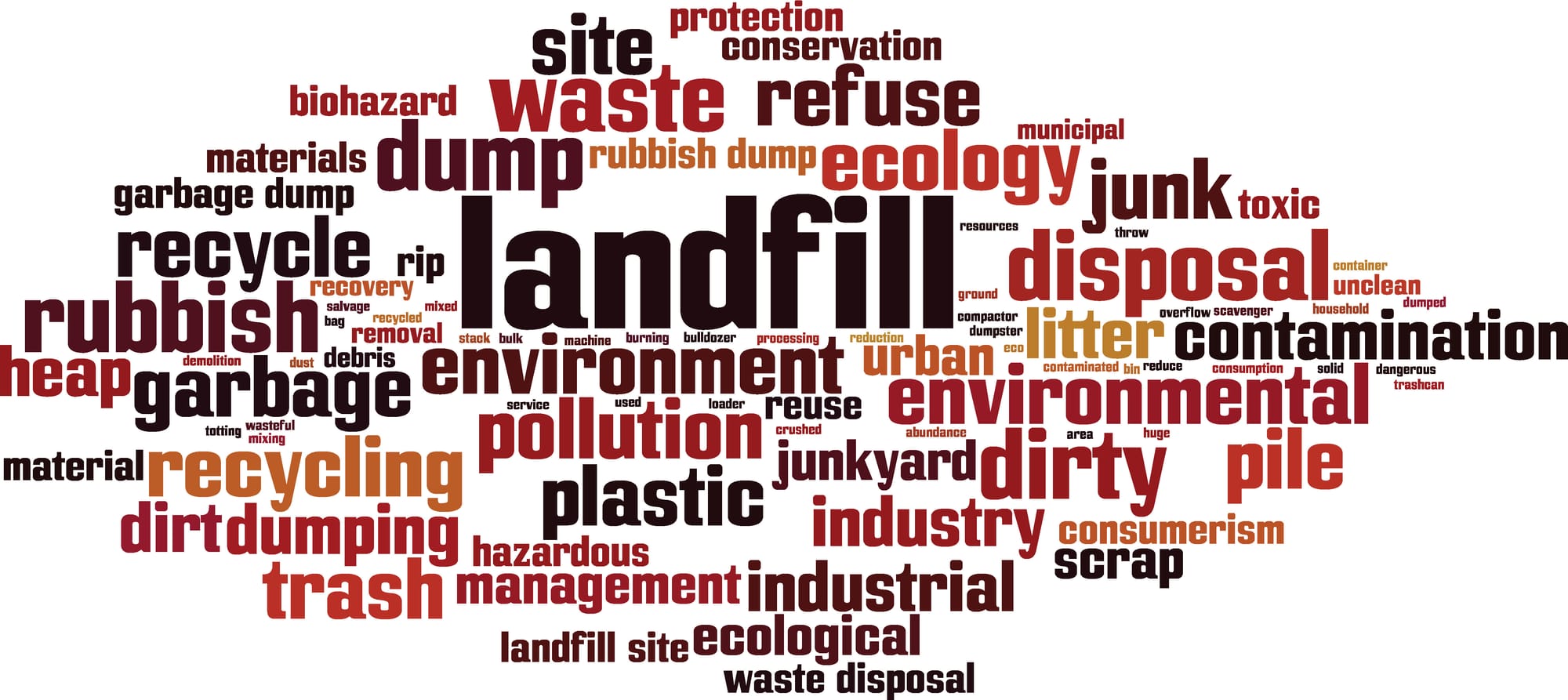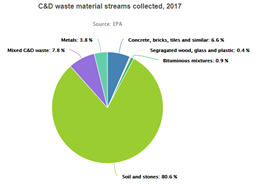Recycling of Construction Waste

Environmental problems pose a serious challenge to the construction industry. Waste management requirements and current measured performance are a warning to the sector.
“Reuse, Recycle, Reduce” (R, R & R) - should be the mantra of all who make their living in the broadest interpretation of the “Construction Industry”.
Materials posing waste management problems include-
- Asphalt, brick, concrete block, including demolished mass concrete.
- Ferrous metal- (Nonferrous metals do not usually pose a problem as they have a higher value. These can be sold and thus the problem goes away- or at least is transferred to another industrial sector!).
- Glass,
- Paper, cardboard, and plastic.
- Timber and wood-based products
Under the Waste Framework Directive (2008/98/EC) Member States must achieve 70 per cent of material recovery of non-hazardous, non-soil-and-stone construction and demolition (C&D) waste, by 2020. In 2016-Ireland achieved 71 per cent material recovery. Not a bad performance 4 years before the deadline.
However, we need be mindful of the fact that the Waste Framework Directive target only applies to a portion of all C&D waste generated, since hazardous waste and waste soil and stones are excluded from the calculation.
In 2017, an estimated 4.7 million tonnes of C&D waste were collected by authorised waste collectors. But------in the abovementioned waste, soil and stones made up 81 per cent of the total processed quantity. Mixed C&D waste accounted for only 8 per cent of the total. Similarly, concrete, bricks and tiles weighed in at only 7 per cent.
And here we have a possible anomaly that works against us in the construction sector- the problem of how to measure this waste?
If we measure it by its weight then soil and stone naturally take a much bigger share of the pie due to its natural weight and density, diminishing the available range (pie size!) for the rest of the materials, and thus affecting our performance measurement. Also, wood, glass, plastic, and paper-based waste, weighing so much less, is not reflected properly.

Overall, on most construction jobs, soil and stone do not feature greatly, therefore we need to generally ignore it in our notional metric of contractor performance, whether by industry or individual contractor.
So how can we in the construction sector be “responsible earthlings”?
The first step in the process must be Attitude. This means we must seek to R, R & R as much as possible. Proactivity is called for here. We would like ask ourselves “do we really have to junk this?”, “could somebody use it?” In the “old days” A skip outside a building site would be visited by the locals, (or maybe not so local!) to salvage timber, plywood, bricks etc for local reuse. This was recycling at its best. The material was put to immediate and local use, without the cost of removal, crushing, shredding, and reforming to a new product.
Regulations preclude this now. There is no path for the public at large to get access to this waste. Thus, we must move our attention to recycling plants. These plants accept, measure separate, process, re-ship, and report on what happens to the waste and what it might be turned into. Then the cycle starts all over again.
Stone and soil on the other hand become positive landfill, and this too is a legitimate process if done properly- considering the greater geographical area- more than just the landfill site. Considerations such as water courses and water levels can be affected here. Rural geography also needs consideration. By how much do we change the level, and what can you use the newly made up area for? Can you build on it? Maybe- maybe not. But that is for engineers and planners to consider.
As we become a more developed country, producing more, using more and most of all- consuming more, the problem will only get bigger. There are 2 solutions here, both involve the recyclers. Increase their capacity to handle an ever-increasing amount of waste- just to stay standing still in performance terms or increase their capacity even more to recycle a greater percentage, and better our statistics. Either way we have no choice but to support the recyclers and their efforts. These businesses are no longer “dumps” but valuable contributors to our way of life. They are our version of insect life in nature, and nature is generally perfect if left alone.


